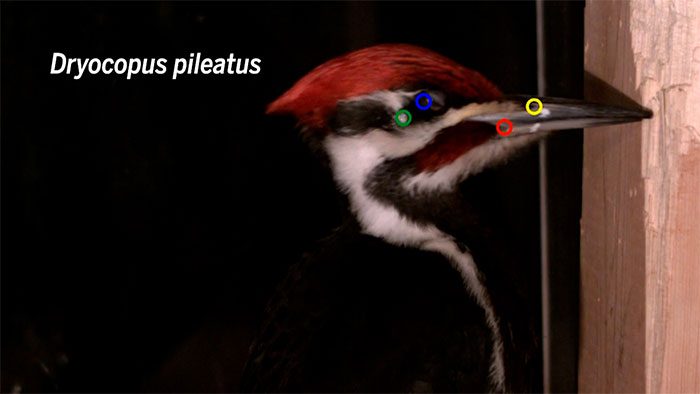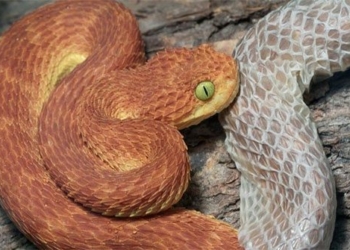By studying the anatomy of woodpeckers, scientists have discovered why they don’t suffer from headaches after pecking tree trunks approximately 12,000 times a day.
When courting a mate, woodpeckers need to perform over 12,000 pecks a day. However, they remain “alert” enough to win over their partners.
Ivan Schwab, a professor at the University of California, Davis, has answered this intriguing question, earning the Ig Nobel Prize—an award given for unusual yet interesting achievements in science that “first make people laugh, and then make them think.”
Professor Schwab’s research indicates that woodpeckers peck at hard surfaces up to 20 times per second with a force 1,200 times greater than gravity, all while experiencing no significant impact, with their retinas unharmed and their brains unaffected.

The body of this bird is designed with special features to minimize negative impacts.
“If you were to suffer a strong blow to the head, you could rupture the blood vessels at the back of your eyes and damage the nerves in that area. Therefore, when I see victims of car accidents and hear about the activities of woodpeckers, a big question arises in my mind: why don’t these injuries occur in these birds?” Schwab stated.
Woodpeckers use direct pecks like arrows into tree trunks which helps reduce the recoil force, preventing shock to the head. Additionally, their bodies are designed with special features to minimize negative impacts.
One millisecond before a peck, the dense muscles in the bird’s neck contract. The neck of the woodpecker consists of over 20 bones connected by soft ligaments and muscle tissue. Meanwhile, the eyelids close tightly, allowing some of the force to be dissipated into the neck muscles, protecting the skull from sudden impacts.
The bones in the skull form a compressive layer that acts as a protective cushion. At the same time, the closed eyelids help shield the eyes from wood splinters and keep the pupils stable—preventing strong forces from displacing or misaligning the pupils.
“The eyelids function like seatbelts in a car, keeping the eyes from being ejected from the face. Without them, the acceleration could tear the retina,” Schwab explained. Furthermore, the outer part of the eye is also very solid and filled with blood, serving to protect the retina from displacement.
The woodpecker’s brain is very sturdy to withstand repeated impacts. In humans, when the head suffers trauma, the brain can shake and jolt within the cerebrospinal fluid. However, woodpeckers lack this fluid, which reduces the risk of injury.

Woodpeckers are a species that cannot sing; they continuously peck not just for food.
According to the research, the unique adaptability of the woodpecker’s brain is closely related to their strong and durable beak. The woodpecker’s beak is not only very hard but also has a special structure filled with elastic material inside. This allows woodpeckers to absorb extremely high impact forces without injury when striking wood or other hard objects.
To gain a deeper understanding of this phenomenon, scientists conducted a detailed study of the woodpecker’s brain. The research found that woodpeckers have a brain that is quite small compared to their body but is very robust. Additionally, the woodpecker’s brain has a special layer of meninges that can cushion and absorb shock. This unique membrane can distribute impact forces evenly across all parts of the brain, thus protecting it from significant damage.
Moreover, the woodpecker’s tail has sharp spines that anchor tightly into the tree trunk while climbing. At that moment, the woodpecker uses its feet to grip the trunk tightly, and the tail acts as a third leg, enhancing balance and stability during activity.
The broader significance of this research lies in the study of the flexibility of the body and muscle structure of woodpeckers, which not only helps us understand these mysterious creatures better but can also inspire advancements in human technology.
Applying the structural design of woodpeckers to the creation of protective gear or tools could provide humans with better protection and adaptability. For example, the structure of a woodpecker’s neck could be used to design safer sports helmets that absorb impact forces and provide better head protection; or it could be applied to robotic arms to improve agility, cushioning, and reduce vibrations during operation and impact.




















































